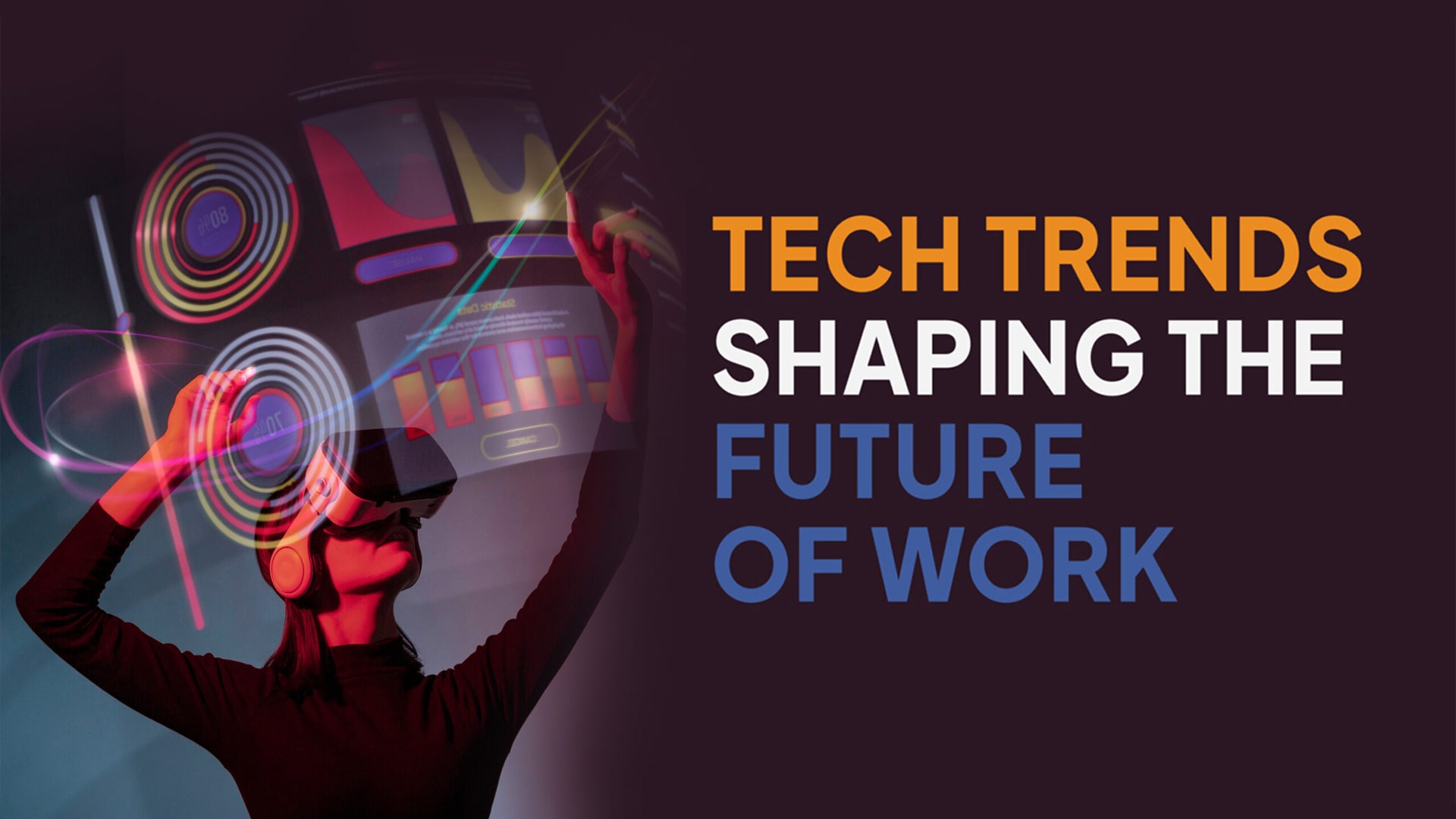Tech Trends Shaping the Future

In today’s rapidly evolving technological landscape, staying abreast of emerging trends is crucial for businesses and individuals alike. The future of technology promises to bring transformative changes across various industries, driving innovation, efficiency, and new opportunities. This blog explores the top tech trends shaping the future and their potential impact.
Artificial Intelligence and Machine Learning
Artificial Intelligence (AI) and Machine Learning (ML) are revolutionizing industries by enabling machines to learn from data, make decisions, and perform tasks that traditionally required human intelligence.
Key Developments:
1. Natural Language Processing (NLP): Advances in NLP are enhancing the capabilities of AI in understanding and generating human language, as seen in applications like chatbots and virtual assistants.
2. AI in Healthcare: AI is being used to develop personalized treatment plans, predict disease outbreaks, and improve diagnostic accuracy.
3. Autonomous Vehicles: AI-powered self-driving cars are becoming more sophisticated, promising to reshape transportation and logistics.
Impact:
1. Increased automation and efficiency in various sectors.
2. Improved customer experiences through personalized services
3. Enhanced decision-making capabilities for businesses.
5G Technology
The rollout of 5G networks is set to revolutionize connectivity, offering significantly faster speeds, lower latency, and greater capacity than previous generations of mobile networks.
Key Developments:
1. Enhanced Mobile Broadband: 5G enables faster download and upload speeds, improving the quality of video streaming, online gaming, and other data-intensive applications.
2. Internet of Things (IoT): 5G supports the massive connectivity required for IoT devices, enabling smarter homes, cities, and industries.
3. Edge Computing: The combination of 5G and edge computing brings data processing closer to the source, reducing latency and enhancing real-time analytics.
Impact:
1. Accelerated digital transformation across industries.
2. Improved connectivity and communication capabilities.
3. Enhanced user experiences with seamless, high-speed internet access.
Internet of Things (IoT)
IoT refers to the interconnected network of devices that communicate and exchange data with each other, enabling smarter and more efficient systems.
Key Developments:
1. Smart Homes: IoT devices such as smart thermostats, security cameras, and appliances are making homes more automated and energy-efficient.
2. Industrial IoT (IIoT): In manufacturing and logistics, IoT is optimizing processes, reducing downtime, and improving productivity through predictive maintenance and real-time monitoring.
3. Healthcare IoT: Wearable devices and remote monitoring systems are transforming patient care by providing real-time health data to doctors and caregivers.
Impact:
1. Increased efficiency and automation in various sectors.
2. Enhanced quality of life through smarter, connected devices.
3. Improved data collection and analytics for better decision-making.
Blockchain Technology
Blockchain is a decentralized, distributed ledger technology that ensures transparency, security, and immutability of data transactions.
Key Developments:
1. Cryptocurrencies: Digital currencies like Bitcoin and Ethereum are gaining mainstream acceptance as alternative investment assets.
2. Decentralized Finance (DeFi): Blockchain is enabling innovative financial services such as peer-to-peer lending, yield farming, and decentralized exchanges.
3. Supply Chain Management: Blockchain is being used to enhance transparency and traceability in supply chains, reducing fraud and improving efficiency.
Impact:
1. Increased security and transparency in transactions.
2. Disruption of traditional financial systems with decentralized solutions.
3. Enhanced trust and efficiency in supply chains and other industries.
Quantum Computing
Quantum computing leverages the principles of quantum mechanics to perform computations at speeds unimaginable with classical computers.
Key Developments:
1. Quantum Supremacy: Achievements in quantum computing are demonstrating the ability to solve complex problems faster than the most advanced classical computers.
2. Cryptography: Quantum computing is poised to revolutionize cryptography, potentially breaking existing encryption methods and creating new, more secure algorithms.
3. Drug Discovery: Quantum computers are being used to simulate molecular interactions at an unprecedented scale, accelerating drug discovery and development.
Impact:
1. Transformation of industries that rely on complex computations, such as finance, healthcare, and logistics.
2. Enhanced security and new cryptographic methods.
3. Accelerated innovation in scientific research and development.
Edge Computing
Edge computing brings data processing and storage closer to the data source, reducing latency and improving performance for real-time applications.
Key Developments:
1. IoT Integration: Edge computing is essential for processing the massive amounts of data generated by IoT devices, enabling real-time analytics and decision-making.
2. 5G Synergy: The deployment of 5G networks complements edge computing by providing the necessary bandwidth and low latency for edge applications.
3. AI at the Edge: Combining AI with edge computing allows for real-time data processing and analysis, enhancing the capabilities of smart devices and systems.
Impact:
1. Reduced latency and improved performance for critical applications.
2. Enhanced data privacy and security by keeping data closer to the source.
3. Increased efficiency and real-time insights for businesses.
Augmented Reality (AR) and Virtual Reality (VR)
AR and VR technologies are creating immersive experiences by overlaying digital information onto the physical world (AR) or creating entirely virtual environments (VR).
Key Developments:
1. Gaming and Entertainment: AR and VR are revolutionizing gaming and entertainment by providing immersive and interactive experiences.
2. Education and Training: These technologies are being used for virtual classrooms, simulations, and training programs, offering hands-on learning experiences.
3. Retail and E-commerce: AR is enhancing online shopping by allowing customers to visualize products in their real environment before making a purchase.
Impact:
1. Enhanced user engagement and experiences in various sectors.
2. Improved training and education through immersive simulations.
3. Increased adoption of AR and VR in everyday applications.
Conclusion
The future of technology is filled with exciting possibilities and transformative potential. From AI and 5G to IoT and blockchain, these emerging trends are shaping the way we live, work, and interact with the world. By staying informed and embracing these innovations, businesses and individuals can harness the power of technology to drive growth, efficiency, and positive change.







